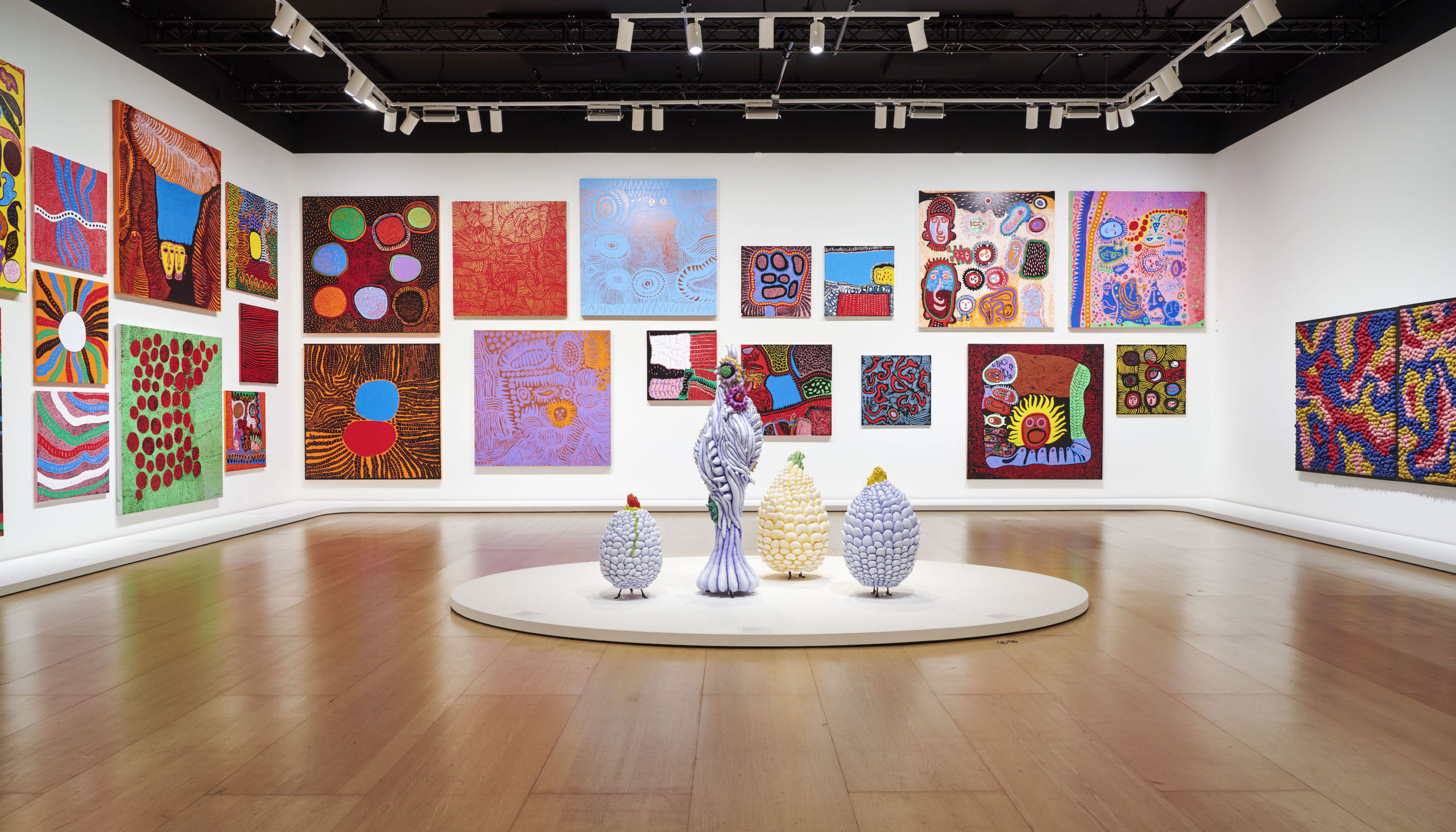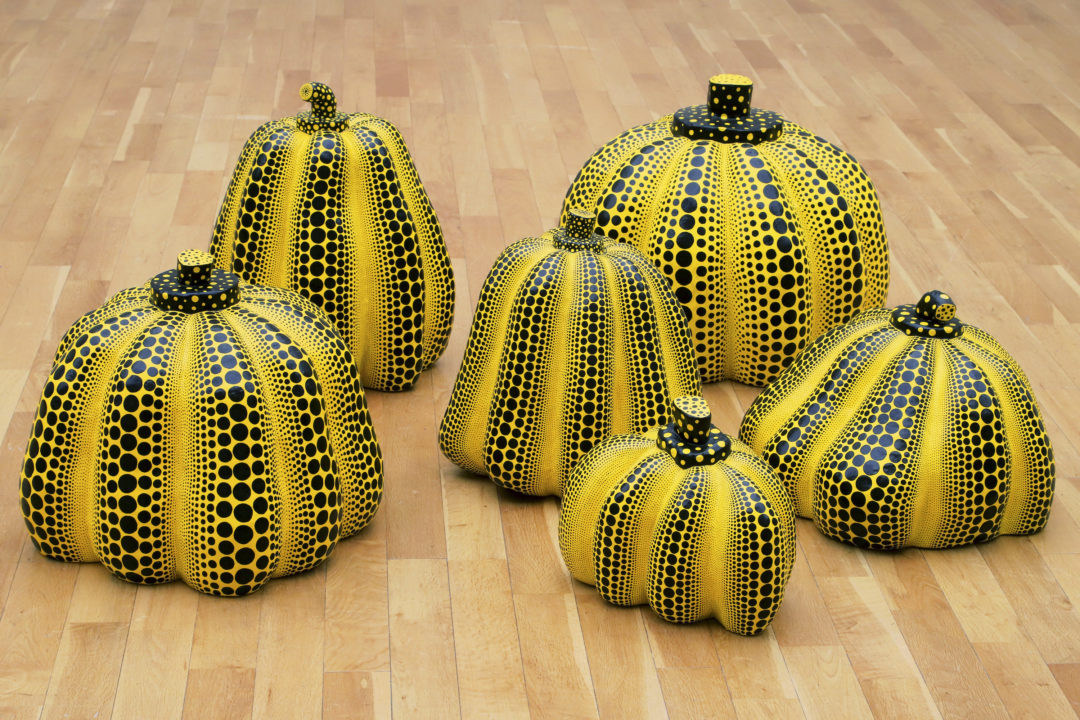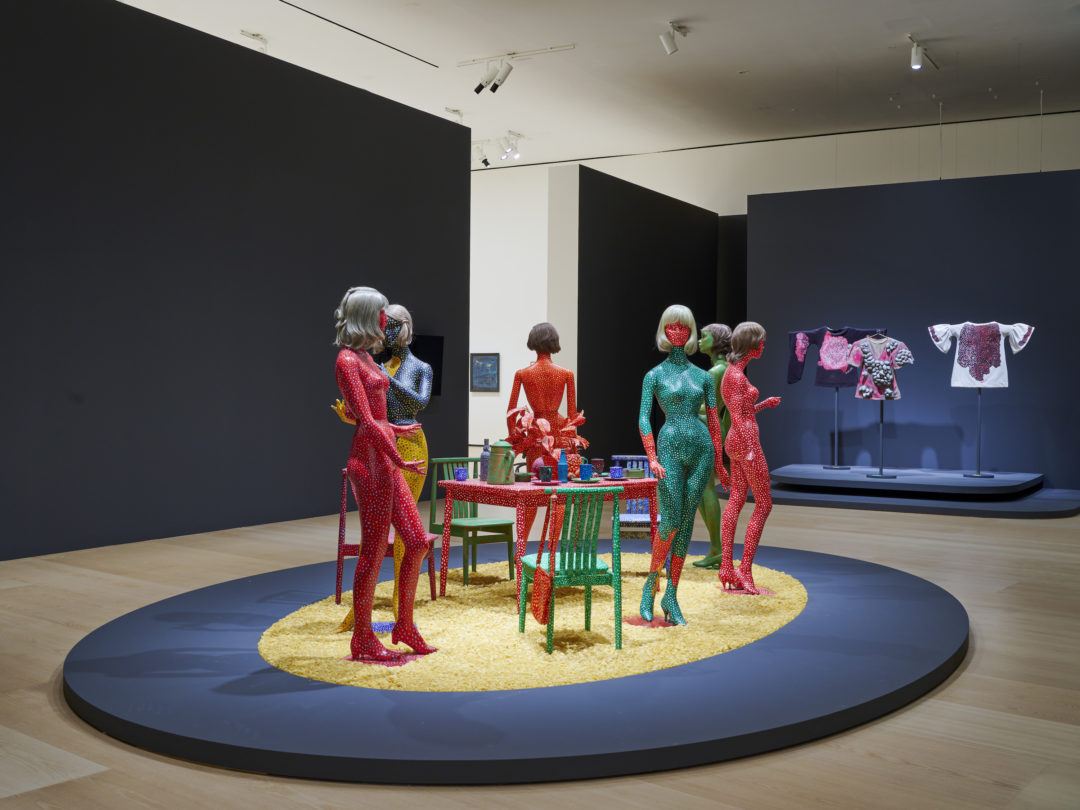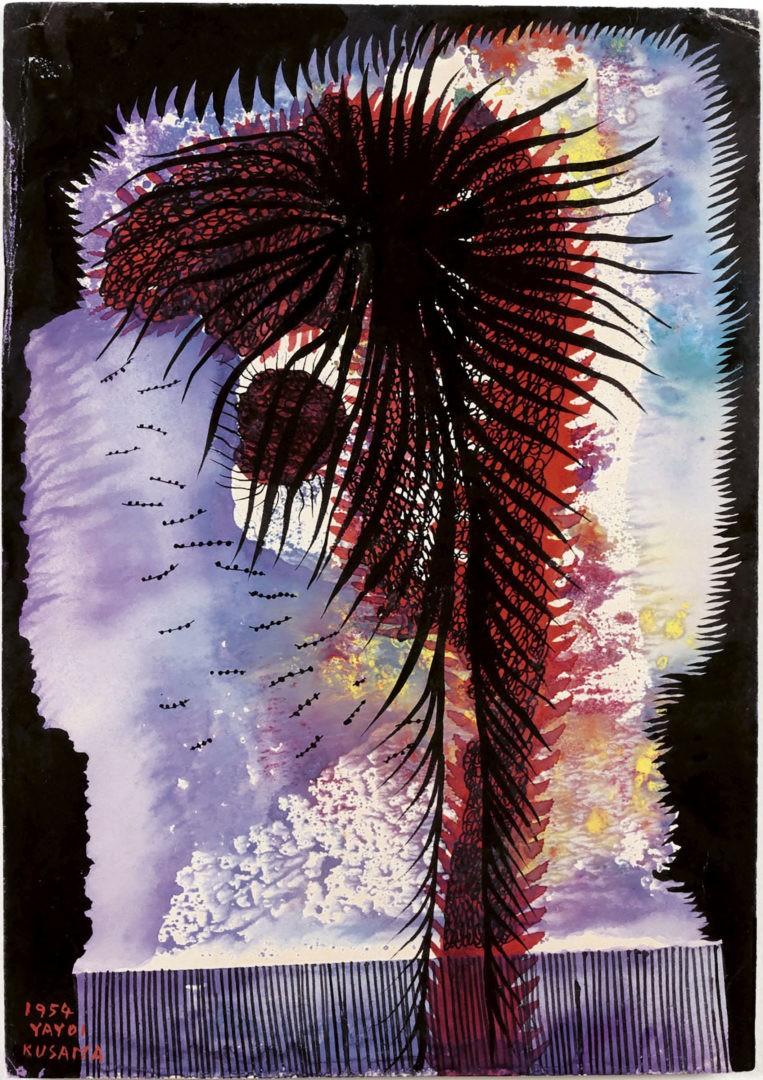Yayoi Kusama : 1945 to Now at Guggenheim Bilbao

Guggenheim Bilbao Museum, Spain
27.06 – 08.10.2023
An exhibition featuring the work of Japanese artist Yayoi Kusama was on view this fall at the Guggenheim Bilbao until October 10th. The artist, who is known for applying her signature polka dot motif to an astounding assortment of surfaces, began her career over 70 years ago and sustains a daily painting practice in her New York studio at the age of 94. The show at the Guggenheim Bilbao followed Hong Kong’s M+ in the tour of an exhibition which brought together the works of this artist who was an active participant in New York’s counterculture during the 1960s before becoming a fixture in the art world.

Mixed techniques, 6 pieces, variable dimensions.
Collection de l’artiste. © Yayoi Kusama
Despite the often caricatured depiction of some of the artist’s most notable works—the dots, for instance—Kusama’s work should not be reduced to this stage of her work, arresting though the dots may be. At the Guggenheim, where the artist’s career trajectory was explored in depth, it became clear that early in her career she was a remarkable illustrator (Dead Leaves of Corn, 1945, Harvest, 1945, Flowers Sketches, 1945) as well as a virtuoso painter (Accumulation of the Corpses, Earth of Accumulation, both from 1950, A Seed, 1952, Ground, 1953, Atomic Bomb, Encounter, 1954) well before the pointillist trope gained traction over any of these other dimensions in the work. In parallel to this, during a later stage of her career—a period which is given ample space in the exhibition—her painting took on a resolute inventiveness, an inspired joviality which the artist has imbued her work with as she enters into her 10th decade. The last space of the exhibition presented a nice surprise, as it was dedicated to this young-at-heart nonagenarian artist’s most recent works.
Kusama’s story is one of an artist caught up in the machinations of history, especially during the 2nd World War, which caused her to become exiled from her birth country—Japan—in order to reinvent herself in a country with a radically different culture—the United States. This historical impact had a marked effect on the artist’s practise, which began mainly with self-portraits; one of the major points of this exhibition is to show how an artist’s practise can suddenly bifurcate in response to global events. Socio-political realities can have equally profound effects, causing surprising turnarounds. It is also interesting to note the extreme precocity and brilliance of the young artist—she very well could have easily pursued a painting or watercolour artists’ career had she not left her native Japan for the Big Apple’s melting pot near the end of the 1950s. It is this post-war cultural and political effervescence which Kusama would come into contact with which would cause her to drift away from her early pictorial proclivities and toward new terrain which would include performance art and happenings; these leanings took on a noted importance. This section was particularly well articulated and showed the extent to which Kusama was involved in the 1960s New York counterculture scene. In fact, it was during these numerous public events that the first polka dots made their appearance—among the many archival films projected in the exhibition, some showed the artist affixing her dots to bodies and objects in the surrounding environment; thereafter they would remain a constant in her work, covering much of her visual production in a gesture nearing the obsessional. Yayoi Kusama took a plane over the ocean in 1957 towards the United States—a flight which would give way to the awakening of a new, “Gaya-esque” cosmic vision. The result was to be one of the very first dot paintings—The Sea. For the artist, the dots reference the universality of the spherical form which is present in all areas of the universe including of course, planet Earth, which the artist refers to as “another dot amongst many.”

Painting on mannequins, table, chairs, wigs, bag, cups, plates, ashtray, carafe, plastic plants, plastic flowers, plastic fruits. Variable dimensions. M+, Hong Kong. © Yayoi Kusama
The chronological and thematic organisation of the Guggenheim exhibition also highlighted the diversity of an all-terrain practise which did not leave out a single discipline—from sculpture to video, performance or painting, drawing to installation. All throughout, a visual language remains clear; this includes the presence of the dots which can be found in all areas of the artist’s oeuvre, but there is also a continuity in the pursuit of answers to profound questions which has remained a constant throughout her career. Infinity, the cosmos, radical connectedness amongst all things and beings, vital energy, death. Impossible though it may seem to provide an exhaustive exhibition of such a prolific artist’s work, one with a remarkable longevity, the choice of emblematic works in each themed section (including Self Obliteration (1966-1974), the reputed installation which features dot-covered mannequins in a domestic setting), Sex Obsession (1992)—a large painting which despite its literal title seems to reference networks and connectivity more than it does any sexual content, The moment of Regeneration (2004), a testament to her love of tentacles for their symbolism of regeneration as its title indicates, but also to a profound mysticism, and of course—a collection of her beloved pumpkins.) gave viewers an overview of the importance of an artist whose political sensibilities never ceased to leave their mark on her work. In many ways, Kusama was a precursor when it comes to approaching many difficult topics—whether with regard to the opposition of all types of dominance in society, our connection to nature or environmental issues, the artist addressed each of these well before they came to the forefront of the contemporary art scene. The artist’s early politically-oriented works which decried the entrenched militarisation of American society gradually transformed themselves into a profound ode to life and to nature, as well as the acceptance of death as a natural, sometimes even desirable occurrence (see the 1999 video, Song of a Manhattan Suicide Addict, whose lyrics clearly reference a desire for disappearance). While some may have made much of the artist’s sometimes over-the-top mysticism, especially with regard to a purported biocosmic liberation, the Guggenheim exhibition’s strong point is that it recontextualises the evolution and formal repetition of an artist whose oeuvre has remained caught up in a whirlwind of an incessant existential quest.

Gouache, ink and pastel on paper, 25 × 17,6 cm. Courtesy du musée d’Art de la ville de Matsumoto
© Yayoi Kusama
______________________________________________________________________________
Head image : Exhibition view « Yayoi Kusama : de 1945 à aujourd’hui », Musée Guggenheim Bilbao, 2023. Yayoi Kusama, Auto-oblitération (Self-Obliteration), 1966-1974.
Painting on mannequins, table, chairs, wigs, bag, cups, plates, ashtray, carafe, plastic plants, plastic flowers, plastic fruits. Variable dimensions. M+, Hong Kong. © Yayoi Kusama
- From the issue: 106
- Share: ,
- By the same author: Don't Take It Too Seriously, Hilma af Klint, Playground, Lyon Biennial, Anozero' 24, Coimbra Biennal,
Related articles
Streaming from our eyes
by Gabriela Anco
Don’t Take It Too Seriously
by Patrice Joly
Déborah Bron & Camille Sevez
by Gabriela Anco

